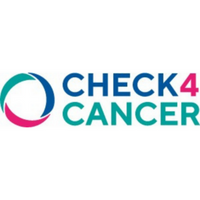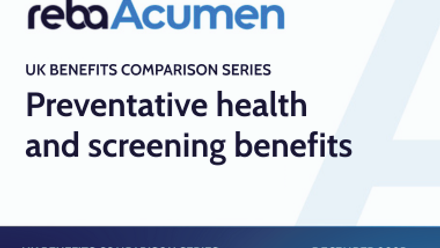Cancer screening vs diagnosis: The small difference that can save lives
When it comes to cancer detection, even seasoned health and benefits professionals can blur the line between screening and diagnostic testing. This distinction is fundamental - not just clinically, but also for employers looking to build meaningful health and wellbeing support for their teams.
Put simply, screening is proactive; it is designed to spot early signs of cancer before symptoms appear. Diagnostic testing is reactive; it investigates symptoms that are already present.
Both play vital roles in reducing the impact of cancer in the workplace, but they are not interchangeable.
Why screening matters
Screening is the cornerstone of early detection. It can identify cellular changes before they become cancerous, which dramatically increases the chances of successful treatment and recovery.
For employers, promoting screening is a powerful way to support employee health, reduce the likelihood of long-term sickness absence, and foster a caring workplace culture.
Evidence-based screening services exist for many of the most common cancers, including breast, cervical, bowel, lung, prostate, and skin. These services help employees take proactive steps for their health.
Each screening has a clear purpose:
- Breast screening detects cancers too small to be felt
- Cervical screening identifies abnormal cells before they turn cancerous
- Bowel screening finds hidden traces of blood or early signs of disease
- Lung screening (via low-dose CT) identifies subtle changes in those with a strong history of smoking
- Prostate screening helps men understand their PSA level and individual risk profile
- Skin screening checks for moles or lesions to spot concerns early
These services are intended for people without symptoms, offering a way to monitor their health and catch potential issues before they develop.
When a diagnostic test is needed
If an employee presents with specific symptoms, such as a lump, unexplained bleeding, a persistent cough, or a changing mole, they require a diagnostic test, not a screening test.
Diagnostic services are designed to provide a swift and accurate investigation to either confirm or rule out the presence of cancer.
A clear diagnostic pathway provides employees with speedy access to specialists, offering clarity and reassurance during what can be a very anxious time.
For example, through partnerships with major insurers, Check4Cancer provides dedicated diagnostic pathways that make it easier for employees to access specialist care when symptoms appear. Understanding this distinction helps prevent dangerous delays and ensures your people get the proper support when they need it most.
Karen’s story: The power of early detection
For 54-year-old Karen, that understanding changed everything.
“I feel hugely fortunate. If it hadn’t been for this screening, I don’t know if I’d have discovered I had skin cancer.”
When Karen’s employer offered access to a skin screening service, she decided to book an appointment. During the assessment, a clinician identified two moles worth further investigation. Following teledermatology assessment, one was removed, and pathology revealed it was a superficial melanoma.
Karen had experienced no symptoms.
“The mole wasn’t itchy, it wasn’t changing - nothing about it looked suspicious. Without that screening, I might never have known.”
Following a small follow-up procedure, her consultant confirmed that all the cancerous tissue had been removed. No further treatment was required. Karen’s story underlines what early detection really means in practice: reassurance, early intervention, and ultimately, a life saved.
Why it matters to employers
For HR and wellbeing professionals, the implications are clear. Understanding and communicating the difference between screening and diagnostic testing ensures that employees access the right services when they need them.
- Promote screening as a proactive measure for employees without symptoms, a way to detect cancer early and reduce long-term risk.
- Encourage diagnostic testing for those with symptoms or concerns, ensuring they act quickly rather than wait for reassurance from a screening check.
- Use real stories, such as Karen’s, to normalise cancer conversations in the workplace and encourage participation in employer-sponsored programs.
With cancer responsible for a significant proportion of long-term sickness absences, early detection initiatives are essential for protecting both people and productivity.
The takeaway
Screening and diagnostic tests are two sides of the same coin in cancer detection - one proactive (no symptoms), one reactive (with symptoms) - but both are vital. Employers who understand and communicate that difference help their people make informed choices nd seek help sooner. Because when it comes to cancer, it is always better to know.
Supplied by REBA Associate Member, Check4Cancer
Check4Cancer offers corporate health screening for different types of cancer.








